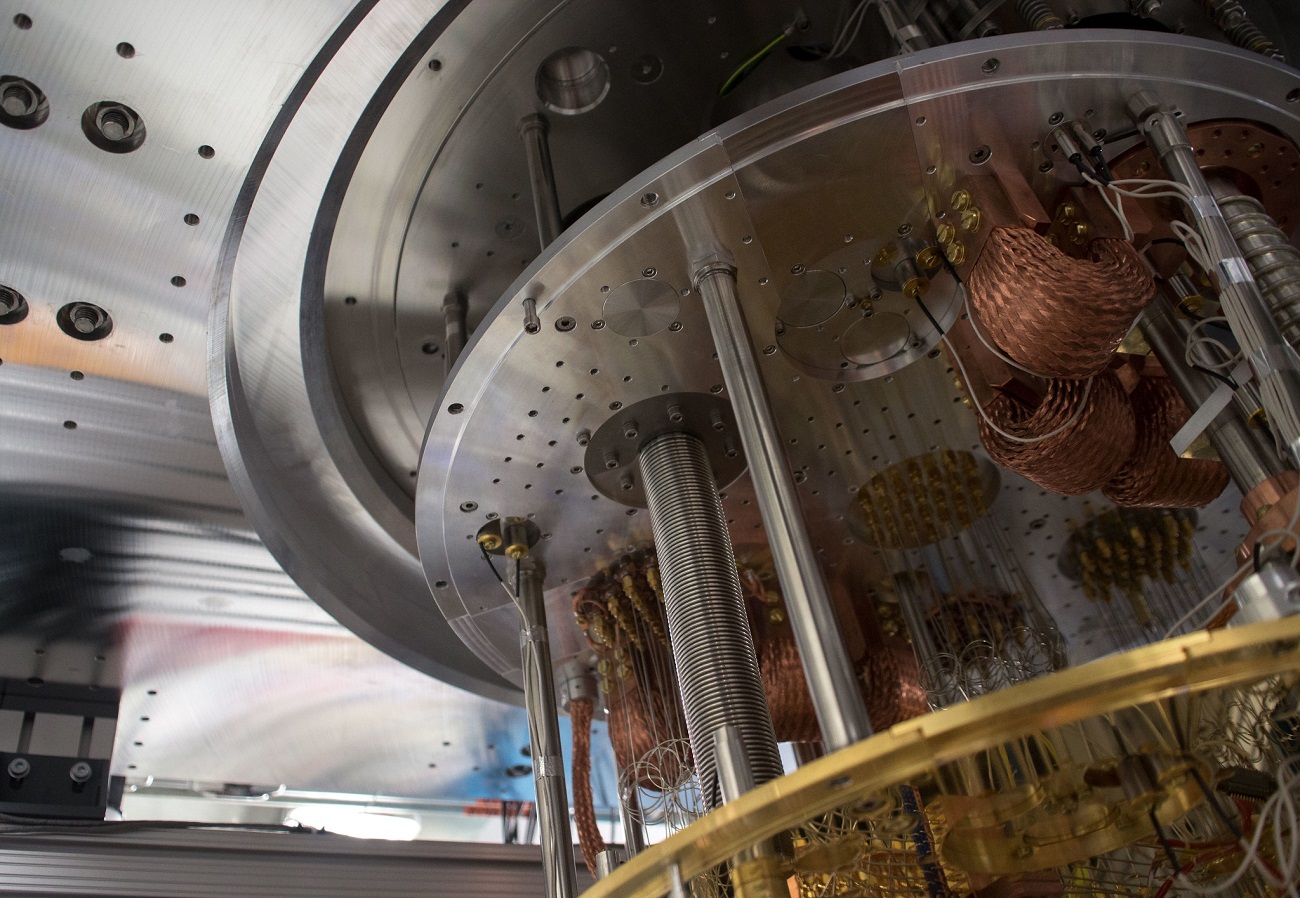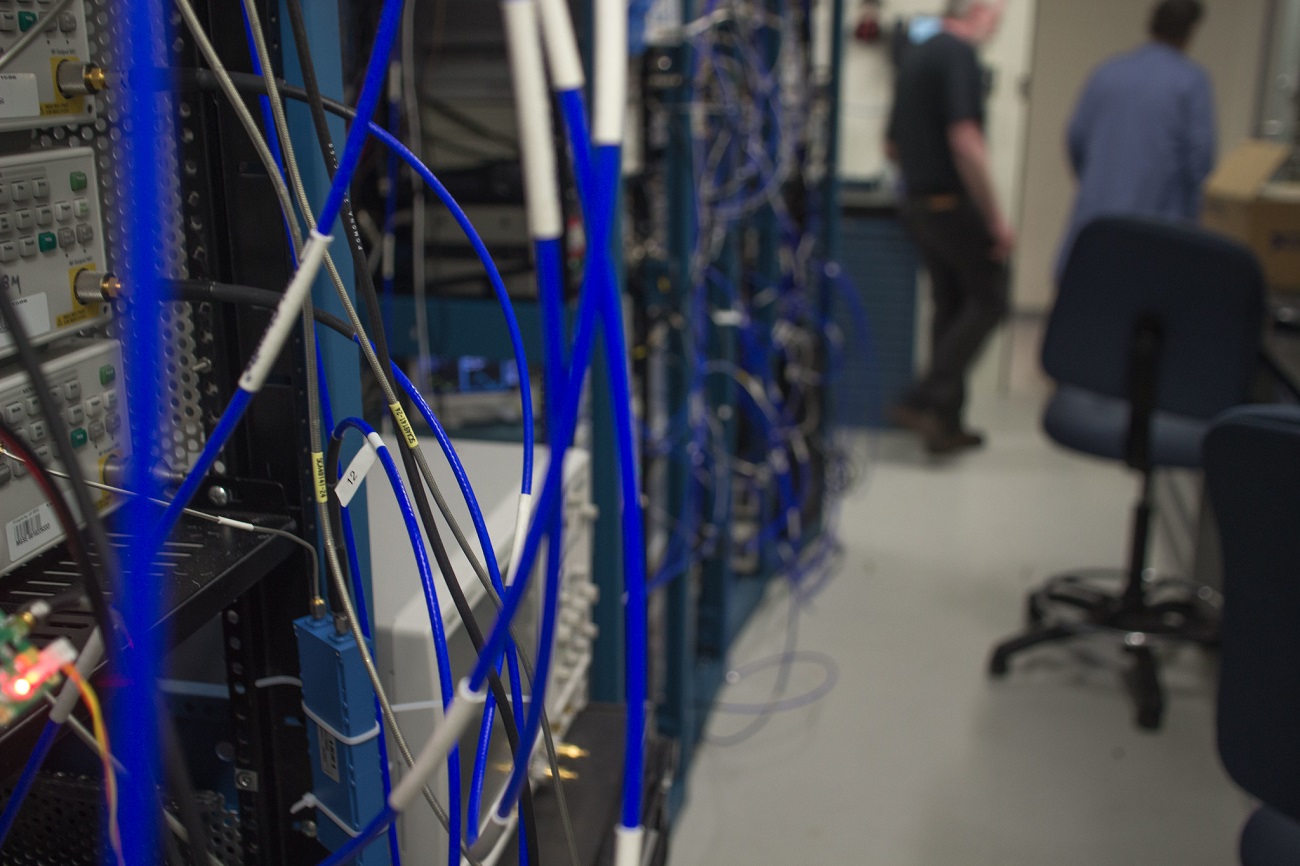Helium deficiency can slow down the development of quantum computers - discussing the situation
We talk about the prerequisites and provide expert opinions.

/ photo IBM Research CC BY-ND
Why helium is needed in quantum computers
Before turning to the story about the situation with a lack of helium, let's talk about why quantum computers need helium in general.
Quantum machines operate with qubits. They, unlike classical bits, can be in states 0 and 1 at the same time - in superposition. The phenomenon of quantum parallelism arises in a computing system when operations are performed simultaneously with zero and one. This feature allows qubit-based machines to solve some problems faster than classical computers - for example, to simulate molecular and chemical reactions.
But there is a problem: qubits are fragile objects, and they can maintain superposition only a few nanoseconds. Even a slight temperature fluctuation breaks it, so-called decoherence occurs. . To avoid the destruction of qubits, quantum computers have to work at low temperatures - 10 mK (–273.14 ° C). To achieve temperatures close to absolute zero, companies use liquid helium, or rather, the helium-3 isotope , which does not solidify under such extreme conditions.
What is the problem
In the near future, the IT industry may face a shortage of helium-3 for the development of quantum computers. On Earth, this substance is practically not found in its natural form - its volume in the planet’s atmosphere is only 0.000137% (1.37 ppm in relation to helium-4). Helium-3 is the decay product of tritium, whose production was stopped in 1988 (the last heavy water nuclear reactor was closed in the United States). After tritium, they began to extract from the components of decommissioned nuclear weapons, but according to the US Congressional Research Service, this initiative did not significantly increase the strategic stockpiles. Russia and the United States have some of its reserves, but they are coming to an end .
The situation is aggravated by the fact that a rather significant part of helium-3 is spent on the production of neutron scanners used at border points to search for radioactive materials. A neutron scanner has been a must-have tool at all US Customs since 2000. Due to a number of these factors in the United States, helium-3 supplies are already controlled by government agencies that issue quotas to public and private organizations, and IT experts worry that helium-3 will soon begin to be missed by everyone.
How bad is it
It is believed that the lack of helium-3 will have a negative impact on quantum developments. Blake Johnson (Blake Johnson), vice president of the manufacturer Rigetti Computing quantum computers in an interview with MIT Tech Review said that the refrigerant is extremely difficult to obtain. The problems are aggravated by its high cost - it takes 40 thousand dollars to fill one refrigeration unit.
But representatives of D-Wave, another quantum startup, disagree with Blake. According to the vice president of the organization, the production of one quantum computer takes only a small amount of helium-3, which can be called insignificant compared to the total available volume of the substance. Therefore, the refrigerant deficit will be invisible to the quantum industry.
Plus today, other methods are being developed for the extraction of helium-3, not related to tritium. One of them is the extraction of isotope from natural gas. First, it undergoes deep condensation at low temperatures, and then passes through separation and rectification processes (separation of gas impurities). Previously, this approach was considered economically inexpedient, but with the development of technology, the situation has changed. Last year, Gazprom announced plans to start producing helium-3 .
A number of countries are making plans for the extraction of helium-3 on the moon. Its surface layer contains up to 2.5 million tons (tab. 2) of this substance. According to scientists, the resource will last for five millennia. NASA has already begun creating plant designs that recycle regolith into helium-3. The development of appropriate terrestrial and lunar infrastructure involved in India and China . But to put it into practice will not work until 2030.
Another way to prevent helium-3 deficiency is to find a replacement for it in the production of neutron scanners. By the way, it was already discovered in 2018 - it became crystals of zinc sulfide and lithium-6 fluoride. They make it possible to record radioactive materials with an accuracy exceeding 90%.

/ photo IBM Research CC BY-ND
Other “quantum” problems
Besides helium deficiency, there are other difficulties that impede the development of quantum computers. The first is a lack of hardware components. In the world there are few large enterprises involved in the development of the "filling" for quantum machines. Sometimes companies have to wait until they produce a cooling system for more than a year .
A number of countries are trying to solve the problem through government programs. Such initiatives have already been launched in the US and Europe. For example, most recently in the Netherlands, with the support of the Ministry of Economics, Delft Circuits was launched. She is engaged in the production of components for quantum computing systems.
Another difficulty is the lack of specialists. Demand for them is growing, but finding them is not so simple. According toNYT, the world's most experienced “quantum engineers," are no more than a thousand. Leading technical universities solve the problem. For example, the first programs for training specialists in working with quantum machines are already being created at MIT . The development of relevant academic programs is also being undertaken at the American National Quantum Initiative.
In general, IT experts are convinced that the problems facing the creators of quantum computers are completely surmountable. And in the future, new technological breakthroughs in this area can be expected.
What we write about in the first corporate IaaS blog:
- Year in action: whom and for what were punished by GDPR
- Data Center Development: Technology Trends
- How to increase the energy efficiency of the data center
- Why companies use virtual machines, not containers
- How IaaS helps grow your business: three challenges that the cloud will solve
- Serverless computing in the cloud - the trend of modernity or the need?
- How to test a disk system in the cloud
